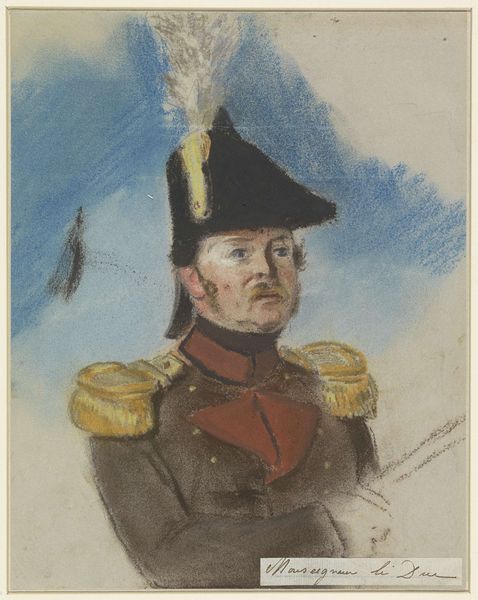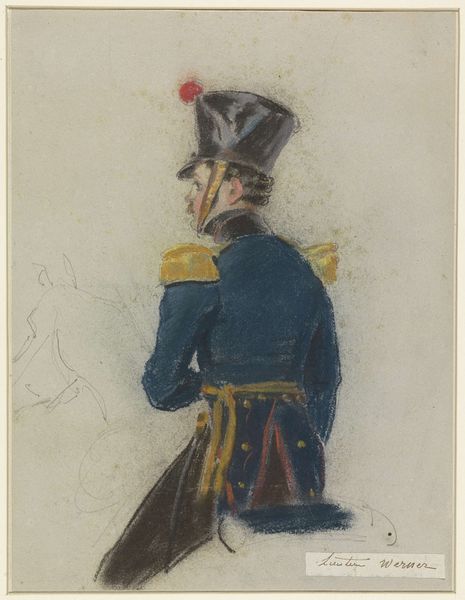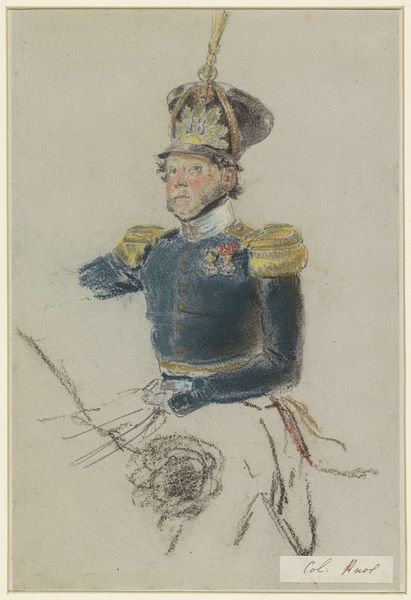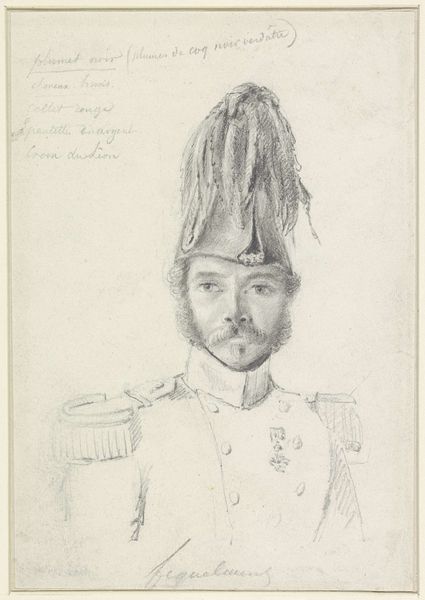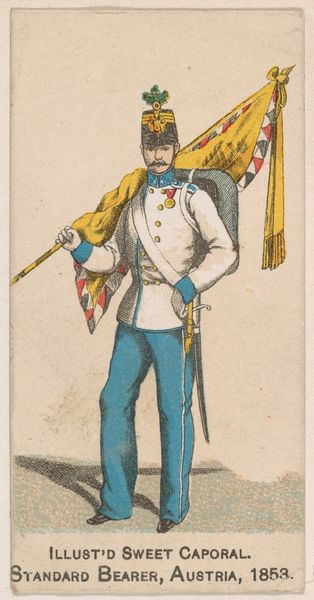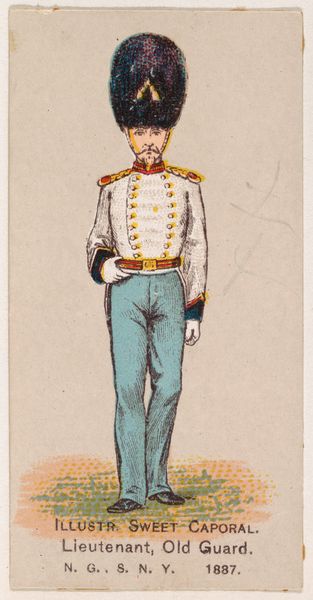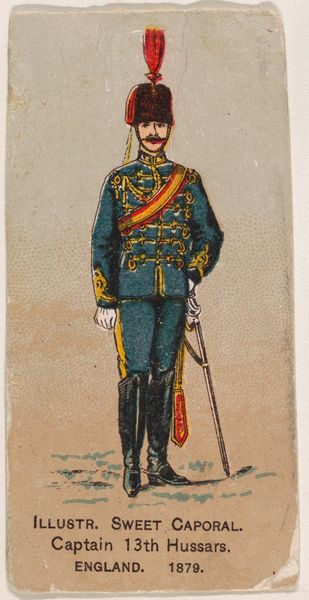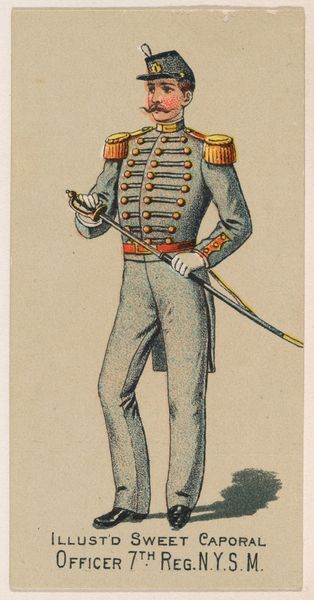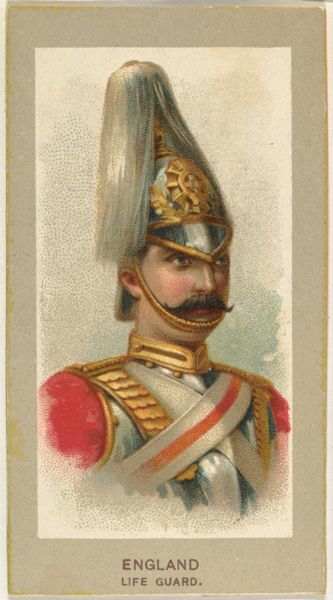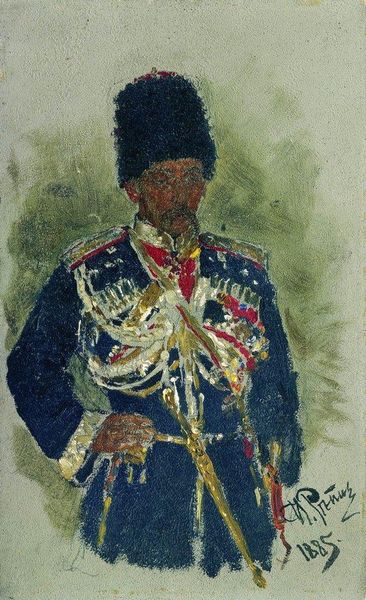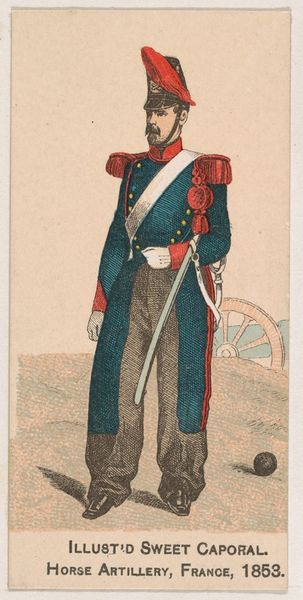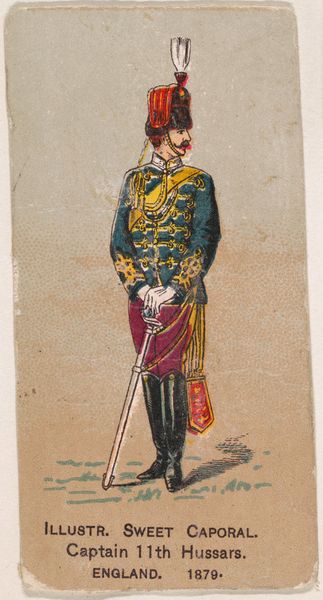
watercolor
#
portrait
#
figuration
#
oil painting
#
watercolor
#
romanticism
#
genre-painting
#
academic-art
#
portrait art
#
watercolor
Dimensions: height 267 mm, width 174 mm
Copyright: Rijks Museum: Open Domain
Curator: Here at the Rijksmuseum, we’re standing before Jacob Joseph Eeckhout’s "Portret van een officier," likely created sometime between 1803 and 1861. It's a striking watercolor piece. Editor: Immediately, the unfinished quality draws me in. It's not hyper-realistic, but the sketchy lines give it a certain energy, a rawness that transcends the subject’s stiff military pose. Curator: Indeed. It reflects the academic art style prevalent then, prioritizing realistic figuration while subtly embracing romanticism. The watercolor medium allows for a softer approach to portraiture, contrasting with the rigid military attire. Editor: And that attire speaks volumes, doesn't it? It’s about power, status, a very specific masculine identity. The artist, whether consciously or not, offers a commentary on the performative aspects of militarism. The portrait’s incompleteness also highlights the inherent instability and fleeting nature of these imposed roles and identities. Curator: It’s also fascinating to consider this portrait within the context of the Netherlands at that time. We see shifts in political power happening with great frequency and impact, each moment defining how we see each other, how we want to be seen, or what role the state played. Editor: Exactly! This portrait, therefore, is not just about an individual officer, but it embodies an era. The subtle use of color seems almost defiant, resisting the totalizing effect of a life defined by political upheavals, revolutions, and change. Even something as supposedly straightforward as military dress has underlying complexities and social anxieties within it. Curator: I concur. And looking closer, you can see the way he uses watercolor, it softens that rigidity. See, he is playing around with expectations by portraying a military man so elegantly and demure. It brings something intimate. Editor: Absolutely. The human emerges despite, or perhaps because of, the uniform. It provokes interesting questions. How does military culture attempt to shape a soldier’s sense of self? And what elements of individuality remain, perhaps peeking through the facade, as evidenced here in the delicate brushwork? Curator: A poignant dialogue indeed – a glimpse into history that reminds us to look beyond surface appearances and engage with deeper social contexts. Editor: Yes, a reminder that even formal portraiture can offer subtle but powerful narratives about identity, power, and the enduring spirit of individuality.
Comments
No comments
Be the first to comment and join the conversation on the ultimate creative platform.
